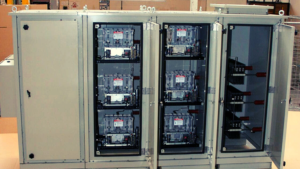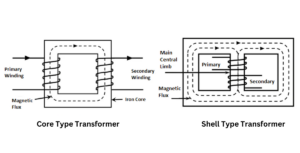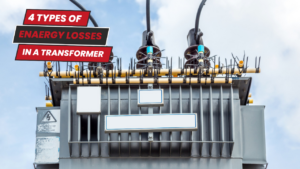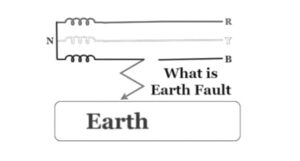Earthing systems are significant elements of an electrical network. For network operators and end users, avoiding equipment damage, providing a safe working environment for personnel, and ensuring supply continuity are significant motivators for implementing reliable fault mitigation schemes.
In medium and low voltage (MV and LV) distribution networks, Neutral Grounding Resistors are commonly used to protect power transformers and generators from damaging currents in the event of a ground fault. This protection system is the best option in terms of quick response to localise the fault. As a result, it reduces and prevents overheating and mechanical stress on the conductors.
Alternative protection systems, such as insulated neutral or direct earthing neutral, have several significant drawbacks, such as dangerous transient overvoltages and difficulty in localising the ground fault in insulated systems or damaging fault currents with potential arc blasts in earthing neutral systems.
The following are the benefits of this solution:
- to limit the damage to electrical equipment such as switchgear, transformers, cables, and rotating machines, and to prevent the fault from spreading, benefiting also personnel safety
- to safeguard the conductors and system components against overheating and mechanical stresses
The system neutral may not be available in many low and medium-voltage systems. This is especially true for Delta and Wye Connected systems that are not grounded. To ground these systems, a grounding transformer (Zigzag or Wye-Delta type) can be used to generate a neutral, which can then be connected to the ground either directly or via a Neutral Grounding Resistor. These are known as artificial neutrals, and each of them can have a Neutral Grounding resistor installed.

What is a Neutral Earthing Resistor (NER)?
The installation of neutral earthing resistors is a popular method for managing fault currents (NERs). In AC distribution networks, Neutral Earthing Resistors also known as Neutral Grounding Resistors, are used to reduce transient overvoltage that passes through a transformer’s or generator’s neutral point to a safe level during a fault event.
NERs, typically connected between the ground and neutral transformers, reduce fault currents to a maximum predetermined value that avoids a network shutdown and equipment damage while allowing enough fault current to flow to activate protection devices to locate and clear the fault.
For the duration of the fault event, NERs must absorb and dissipate a significant amount of energy while staying within the IEEE32 temperature limits. Since equipment and personnel safety and supply continuity depend on NER design and selection, these factors are important.
Neutral Grounding and Its Importance
In terms of equipment costs, compromised safety, and network availability, fault current and transient over-voltage events can be costly.
Electricity supply interruption, significant equipment damage at the fault point, premature equipment ageing at other points on the system, and increased safety risks for personnel are all possible outcomes of fault situations. The following advantages can be attained by installing NERs on the distribution system and managing fault currents and transient overvoltage:
- Elimination or reduction of equipment physical damage.
- Extension of the transformers’ useful lives as connected distribution equipment.
- Decreased costs for operation and maintenance.
- Simplifying, quickly identifying, and eliminating the original problem.
- Network security is improved, and there are fewer unplanned shutdowns.
Neutral grounding resistors (NGR) are primarily used in the power system to limit the high current flowing as a result of line-to-earth faults.
The Neutral point of the Transformer’s secondary winding is connected to the earth via a resistor in the substation. This resistor is known as the Neutral Grounding Resistor. In a power plant, the neutral point of the alternator is also connected to the earth.
Why Use a Neutral Grounding Resistor?
A Neutral Grounding Resistor NGR (primary)’s function is to limit the fault current already present in a single line to ground fault. As a result, NGRs are commonly used in low and medium voltage (LV and MV) DISTRIBUTION NETWORKS to protect generators and transformers from damaging currents in the event of an earth fault. Alternative protective systems, such as direct earthling neutral and insulated neutral, have significant drawbacks (e.g., transient overvoltages, damaging fault currents with potential arc blasts, and difficulties in localising the ground fault in insulated systems). That is not the case with the NGR system, which response quickly to localise the fault and even prevents overheating. An NGR system can be installed between the transformer’s neutral point and the ground to limit the ground fault and provide a window of opportunity for quick fault localisation. Most importantly, it keeps the equipment safe.
What Purpose Does a Neutral Grounding Resistor Serve?
NGR reduces the ground-fault current to a predetermined value. You can benefit from both ungrounded and solidly grounded systems with a properly designed Neutral Grounding system. When we connect an NGR system between a power system’s neutral and ground, it begins to provide ground fault protection by limiting ground-fault currents to safe levels. As a result, it ensures that all electrical equipment in your power system is completely safe. NERs not only absorb a large amount of energy, but they also dissipate it for the duration of the fault event in such a way that the temperature does not exceed the limits. As a result, NER design and selection are critical if you want to protect equipment and ensure personnel safety.
What are the Purposes of a Neutral Grounding Resistor
So, the primary purpose of an NGR in the power system is to limit the high current that flows because of the line to the earth’s fault. An NGR works as a fault current regulator. It limits the fault current with resistance. As a result, when there is a high flow of fault current, it can easily damage the conductor because protection relays take time to properly isolate the power system. For that little time, NGR steps in by limiting the sudden flow of fault current and converting it into heat energy.
Neutral grounding resistors can also assist in the operation of the Earth Fault Relay. It is possible to do so by monitoring and measuring the current that flows through the NGR. The earth fault relay will trip the circuit if there is an earth fault. The neutral grounding resistor can assist in connecting protective equipment that cannot normally operate at a high current. Consider the case of Relay. An NGR can be used to reduce current, allowing the protective equipment to operate at a lower current. NGR also protects electrical equipment from insulation breakdown. The faults in electrical equipment are caused by transient overvoltages caused by arching grounded on ungrounded systems. Mechanical stresses in apparatus and circuits carrying fault currents, as well as NGR, help to reduce them in solidly grounded systems. An NGR also aids in measuring fault currents via neutral grounding transformers. It can also function as an alarm system if a ground fault is present. Furthermore, it provides sufficient tripping levels to aid in careful ground-fault detection.
When Should You Use An NGR?
There are numerous reasons to employ NGR. Among them are:
- Electrical shock or arc flashes pose a significant risk to personnel and equipment.
- High earth return currents can cause equipment damage or electrical faults.
- High-earth return currents may begin to interfere with your telecommunications equipment.
- NGR offers safety a dependable, simple, and selective method of protection.
- Unplanned downtime can result in losses.
- NGR lowers the step voltage.
- Because your equipment is getting older, your maintenance costs may rise.
- Furthermore, it lowers operating costs.
The earthing system is always important in any electrical system. A NER is required in AC distribution networks to prevent equipment damage and to provide a safe working environment for personnel.



